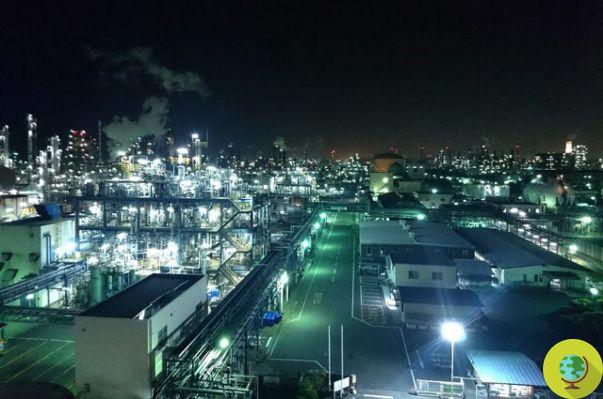
The beautiful fireflies may soon disappear due to light pollution, habitat loss and the use of pesticides.
He is about to end up run over, his mother saves himLoss of habitat, use of pesticides in agriculture and light pollution due to too many artificial lights: because of all this, the wonderful fireflies could soon disappear, with relative impacts on biodiversity and ecotourism. According to a team of biologists, the populations of these insects are progressively reducing and the reasons are there for all to see.
Fireflies belong to a very widespread group of insects, with over 2 different species scattered around the world. Scientists led by Sara Lewis, a biology professor at Tufts University in Massachusetts, in the US, have examined the most immediate threats to their survival.
From the research, conducted in collaboration with the International Union for The Conservation of Nature, it clearly emerged that habitat loss is the most critical threat to firefly survival in most geographic regions, followed by light pollution and use of pesticides.
"Many wildlife species are dwindling because their habitat is shrinking," Lewis explains. Some fireflies are hit particularly hard when their habitat disappears because they need special conditions to complete their life cycle ”.
For example, the Malayan firefly (Pteroptyx tener), which lives in close contact with the mangroves, is progressively disappearing due to the conversion of their habitat into palm oil plantations and aquaculture farms.
Furthermore, a surprising result that emerged from the survey was that, on a global level, light pollution can be considered the second most serious threat to fireflies. Artificial light at night has grown exponentially over the past century. This, in addition to destroying natural biorhythms - including ours - confuses the firefly mating ritual. Many fireflies, in fact, rely on bioluminescence to find and attract their mates, and previous work has shown that too much artificial light can interfere with these courtship exchanges.
Moreover, as if that were not enough, the experts have considered thewidespread use of pesticides as another threat to the survival of fireflies. Most insecticide exposure occurs during the larval stages, because young fireflies spend up to two years living underground or underwater. Insecticides such as organophosphates and neonicotinoids are designed to kill parasites, but they also have beneficial effects on insects. While more research is needed, the experts conclude, evidence shows that many commonly used insecticides are harmful to fireflies.
Finally, researchers also highlight risk factors that help predict which species will be most vulnerable to threats such as habitat loss or light pollution. For example, the females of the blue firefly (Phausis reticulata) are unable to fly, so when their habitat disappears, they simply cannot move elsewhere.
Yet researchers remain optimistic about the future of fireflies. “Here in the United States, we are fortunate to have some robust species like the Big Dipper fireflies [Photinus pyralis] - observes Lewis. They can survive practically anywhere and they are also beautiful ”.
Fonti: Tufts University / BioScience, biz157
On fireflies you might also be interested in:
- The wonderful show of fireflies in Milan
- Fireflies are disappearing - an increasingly rare light show
- Fireflies: 5 curiosities you may not have known about


























